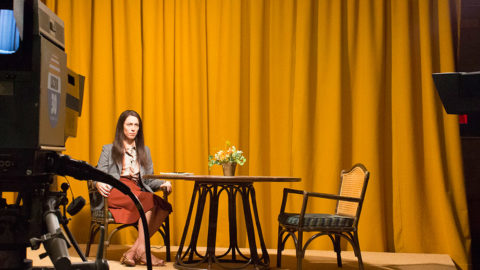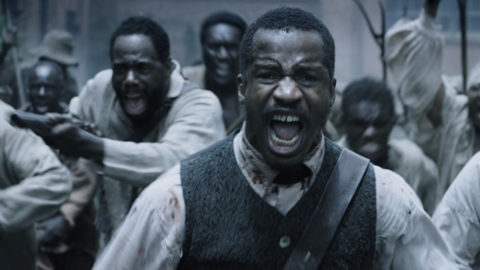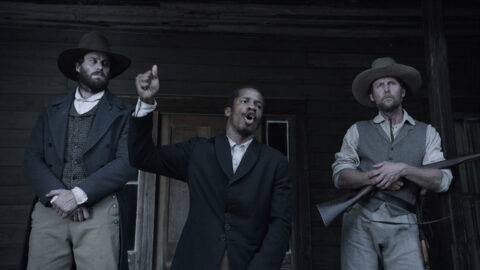Sundance Dispatch #4
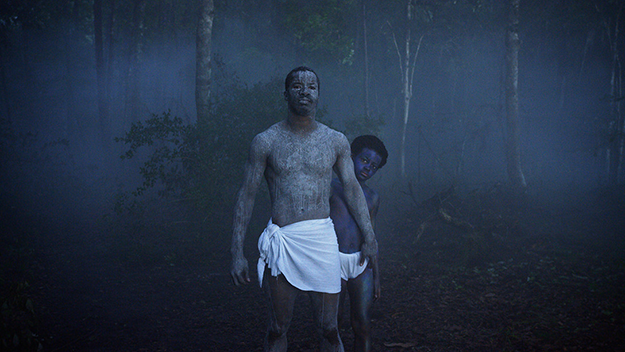
The Birth of a Nation
A handful of films won multiple awards over the weekend as the 2016 Sundance Film Festival came to a close. Nate Parker’s The Birth of a Nation—the story of Nat Turner and the 1831 slave rebellion—capped its major launch at the festival with the festival’s two top awards, the U.S. Dramatic Grand Jury and Audience Prizes. Elyse Steinberg and Josh Kriegman’s Weiner, about the disgraced New York politician Anthony Weiner, and Brian Oakes’s Jim: The James Foley Story, about the abducted American journalist who was murdered by ISIS two years ago in Syria, won the U.S. Documentary Grand Jury and Audience Awards, respectively. Meanwhile, in the international dramatic competition, Elite Zexer’s Sand Storm, from Israel, won the World Dramatic Grand Jury Prize and Rokhsareh Ghaem Maghami’s Sonita, a look at a teenage, female Afghan rapper, won both the Grand Jury and Audience Awards in the World Documentary Competition.
Of the documentaries that were celebrated at Sundance, three of the best in competition push the boundaries of nonfiction cinema. Among them, winners Michal Marczak’s All These Sleepless Nights and Penny Lane’s Nuts! were Sundance standouts, as was Maya Goded’s Plaza de la Soledad.
Each film mixes documentary and dramatic techniques to achieve a complex portrait and offer a rich, emotionally resonant story.

All These Sleepless Nights
Although his film was competing for a nonfiction prize at Sundance, filmmaker Michael Marczak, an emerging filmmaker from Poland, said that he doesn’t much care how his movie is classified, fiction or nonfiction. Marczak’s All These Sleepless Nights, winner of the directing prize in the international documentary competition, is striking not only because of its rich, intimate photography. Its dense and crisp audio is ear-catching and adds an unexpected aspect of intimacy to the film.
With All These Sleepless Nights, his follow-up to the 2012 film, Fuck for Forest—about an NGO making erotic films to raise money for environmental causes—it was emotions that Marczak seemed more set on documenting, capturing and preserving feelings rather than drawing portraits of his subjects themselves.
A look at two twentysomethings, Krzysztof Bagiński and Michał Huszcza, shot over the course two summers in Poland, All These Sleepless Nights is a look at contemporary Warsaw youth. Situating his film on city streets or in local clubs, parks, and apartments, Marczak said that he began the film from a place of concern about aging and a sense of anger with mainstream entertainment. He wanted to document the reckless beauty of being young, immersing himself in their world of drugs and sex, dancing and hanging out, before he himself got too old to fit in with his subjects. He also aimed to correct what he felt were increasingly inauthentic representations of younger folks in Polish cinema.
Speaking of a lack of accurate visual imagery, Marczak said that films about young Polish kids are terrible.
“This Warsaw that I am living in and these people that I am hanging out with are not present in any sort of film,” Marczak said during an interview in Park City earlier this week. “What is happening in Polish film at the moment is plastic and looking towards Hollywood and creating these young characters which are copies of American characters. Teenagers and young people don’t live like that in Poland.”
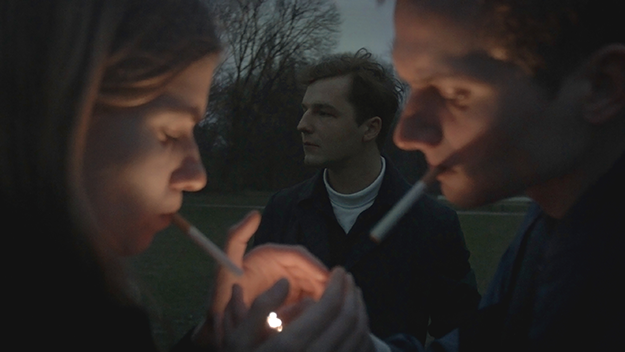
All These Sleepless Nights
Marczak said he was concerned that a vicious circle was emerging, with the unreal characterizations of young people that are seen in the media causing real Polish teens to replicate the faux kids they see on their screens.
To capture a realistic and cinematic experience for All These Sleepless Nights, Marczak employed a rather unique approach. He removed the boom mic from his crew and re-recorded his film’s audio later. And he trained his subjects for nearly six months to help them understand how their actions would translate on screen and give them an understanding of the basic elements of cinema. The filmmaker spent more than a year and a half—two Polish summers to be precise—documenting his youthful subjects.
Notably, he recorded the documentary twice, once with his camera and then later in ADR sessions where he re-recorded all of the audio in a studio environment, looping the dialogue with his subjects, creating Foley effects and returning to locations to capture natural sounds for the final film.
“It’s a huge effort to re-create everything,” sound person Jan Pasemann, who also worked with Marczak on his previous film, said, sitting with the director during the recent interview. “Then again, you can really go into detail.” Pasemann honed in on emotion during his audio work and to clarify certain moments or relationships for the audience and enhance their experience.
It is fitting that Marczak won the directing prize at Sundance as he effectively directed his film, and its subjects, twice before completing the film. He said that he learned a lot from the experience.
“There’s a lot of tricks,” Marczak admitted, clearly proud of his achievements. “Now I feel like I have directing skills to guide people and get the performances out from them again, in a black room. It’s much different directing for audio than it is directing for video. You can do so many things in audio to cheat it, to get the emotions.”
“When you are doing a film more about feelings and a state of mind, where things really aren’t expressed in language, you really have to use the tools of cinema,” Marczak added, “There are things that you can do to make it very close, and things you can teach yourself to have the film look very cinematic and to use that language and still be in the realm of reality.”
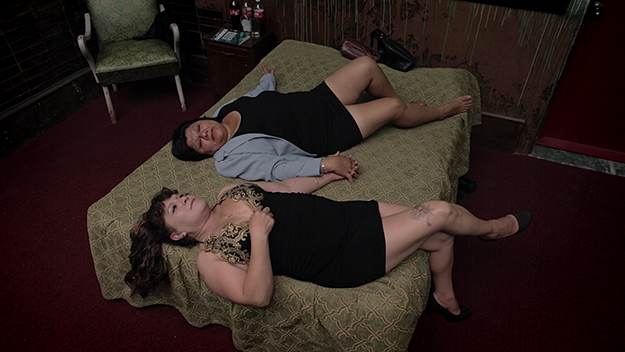
Plaza de la Soledad
As with All These Sleepless Nights, making Maya Goded’s Plaza de la Soledad was a collaboration between filmmaker and subjects. In this case, the production was in Mexico City.
For 20 years prior to picking up a video camera, Goded had been documenting women in the area of D.F. known as La Merced. She had traveled there while working for a human rights organization and, while photographing in the area, got to know the women who would become the subjects of her beautiful, respectful, and celebratory first documentary.
Goded documents four vibrant Mexican women—Carmen, Lety, Raquel, and Esther—all aging prostitutes who work the streets in the La Merced area. She has said that she moved by their resilience and survival instincts while getting to know them over the past 20 years.
“I’ll never leave this square even when I die,” one of the women says during the film. “This is where I am myself, I don’t have to pretend. This is my home and these women are you family, I need to be with them.”
Plaza de la Soledad places the women, their bodies, voices, and feelings, as well as their encounters with each other, at the center of the story. At times the women seem to be performing for Goded, whether singing or joking, yet at other times it’s clear that they are using the access she offers to work through and candidly reflect on their own experiences. The women open up to the camera, sharing meaningful songs, posing playfully and offering assessments of their lives, fears and hopes.
Goded seems to offer them a sort of escape and validation that is empowering.
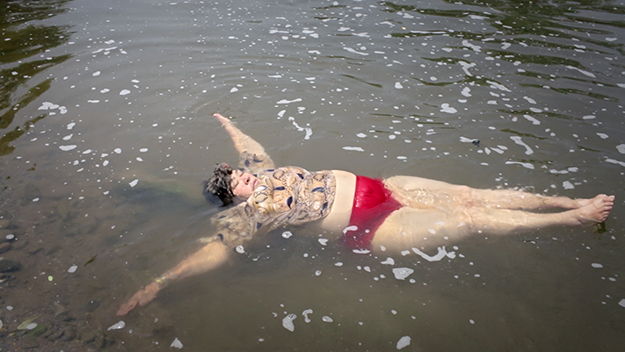
Plaza de la Soledad
One of the women, Esther, speaking after a private recent screening of Plaza de la Soledad for cast and crew, said: “It made me look back at myself and it made me cry, because I was always looked inside-out, but never otherwise. And Maya, I feel her behind me, she turns me around and says: ‘Look at yourself. Who are you?’ And then I discover myself.”
Seeing themselves and their stories on the big screen at the recent private screening was quite emotional for the women.
“It spun my world, as we say, to see myself on the big screen,” said Carmen, another women from the plaza. “People will know who we really are,” she said, in a previously unseen video interview that was shared with FILM COMMENT this weekend. “We are mothers of a family, we are friends, we are lovers and above all we are women, we are citizens.”
“It touches me,” Lety added afterward. “Because I’ve gone through many difficulties in that kind of life.”
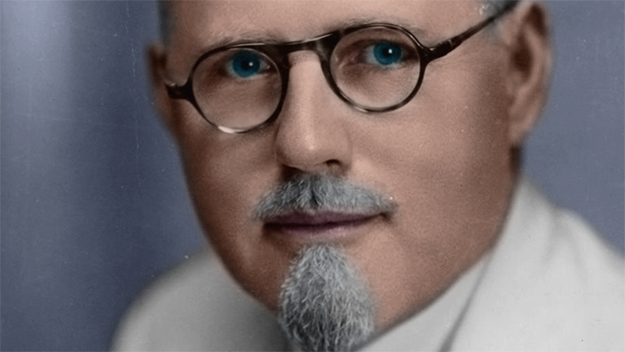
Nuts!
The latest film from Penny Lane—her most recent feature was 2013’s Our Nixon, directed with Brian Frye—starts with an unbelievable premise and then spins off into an even more outlandish tale of a larger-than-life figure.
Leading up to Sundance, Lane was clear that Nuts! would tell the “mostly true” story of early 1900s figure Dr. John Romulus Brinkley, a man who claimed that he could cure male impotence with goat testicle implants. Later, to market his discovery, he apparently built a million-watt radio station that broadcast his ads and messages around the country. Oh, and he may have also won a governor’s race.
For Lane, Brinkley was a figure too irresistible not to put in a film. Yet by the end of the movie, it’s tough to know what is true and what isn’t—and, quite frankly, it doesn’t really matter. The story that Penny Lane weaves together—through animation, re-created artifacts, and distinctive voiceovers—is so compelling, entertaining, and engaging that whether or not it’s all true is beside the point.
Playful, alive, inventive, and fun, Nuts! is a sharp examination of a media-savvy figure with an outsized personality, who courts public attention for his own gain. Donald Trump is the latest appropriate analogue in a long series of J.R. Brinkleys who have made their name in this country over the past century.

Nuts!
Challenged by the fact that Brinkley lied for a living and created his own propaganda and promotional material, Penny Lane let his outrageousness guide her. Animated sections in the chaptered film use different animators to visualize the stories and sometimes evoke the style of TV’s Beavis & Butt-Head or King of the Hill. The narrated sequences meanwhile employ the approach of a carefully crafted documentary radio program not unlike This American Life.
Appropriately, for their expert work assembling such an array of elements to craft the film, Lane and her team were awarded a special jury prize for editing, on the closing weekend of the festival.
“I thought from the very beginning that the last thing I wanted to do was make a film where you as the audience member could sit back and be like, ‘What a bunch of dummies, how could they possibly have believed this,’” Penny Lane elaborated during a Sundance Institute interview. “It was really important to me that it become clear that we’re all those dummies. Any of us can fall for anything. Brinkley was a person who knew that, and a pretty good rule of thumb would be that the better the story is, the more critical distance you should bring to it.”
“It’s good to be skeptical of really great stories,” Lane said.



